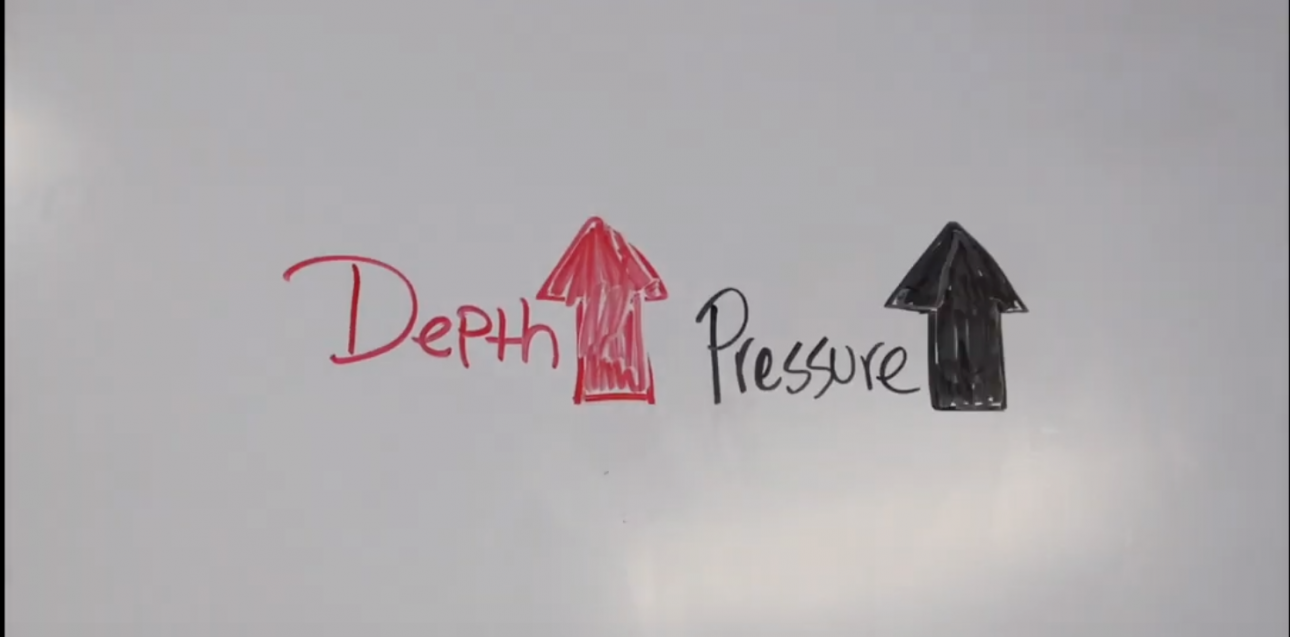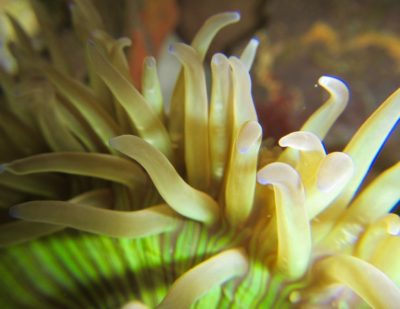
The Deepest part of the ocean is about 36,200 feet or over 11,000 meters, which is deeper than Mt. Everest is tall by about 7,000 feet! Animals that live this deep have a remarkable amount of challenges that they have to adapt to in order to live, such as absence of light, freezing temperatures, and immense increases of pressure. Today we are going to talk about why pressure is increased as you go deeper as well as the effects that it has on many animals that live down there.
Have you ever been on a snorkel or a SCUBA dive and felt pressure on your ears as you go deeper down? Well, if you have, that is actually the air cavities inside your ears shrinking as you go deeper. As a rule of thumb the deeper you go in the ocean the more pressure is being forced onto your body. We normally measure pressure in atmospheres, which is the amount of pressure exerted by the Earth’s atmosphere. At the surface of the ocean we only have 1 atmosphere of pressure pushing down on our bodies. Each atmosphere is equivalent to 14.5 pounds per square inch, meaning you have 14.5 pounds of force pushing down on you right now. However, as you descend in your SCUBA unit or pressurized submarine, the pressure increases by 1 atmosphere every 10 meters (33 feet). So, at the deepest depths of the ocean, you have the weight of an elephant on every inch of your body, OUCH!
So how can animals that live and thrive in the deep depths of the ocean survive these immense pressures and we cannot? Inside of our bodies we have many air cavities that would pop and rigid bones that would snap when exposed to the pressure. So for invertebrates and fish that live in the Marianas Trench the simple solution is to remove the air cavities and have very flexible bones…if any at all! Fish do this by evolving past swim bladders, an organ that normally controls buoyancy. Many invertebrates do this by having hydrostatic skeletons; a fluid filled cavity surrounded by muscle, or no air cavities as well. Marine mammals like deep diving whales have incredibly flexible rib cages that can compress with the pressure and collapsible lungs that can withstand rupturing! This is exactly how Sperm Whales are able to dive down to 7,000 feet deep to battle and eat Giant Squid.
Information:
- Kolb, J. (n.d.). Water Pressures at Ocean Depths. Retrieved October 05, 2016, from http://www.pmel.noaa.gov/eoi/nemo1998/education/pressure.html
- How does pressure change with ocean depth? (n.d.). Retrieved October 05, 2016, from http://oceanservice.noaa.gov/facts/pressure.html


